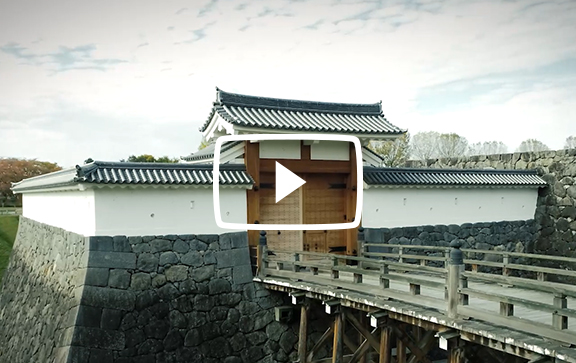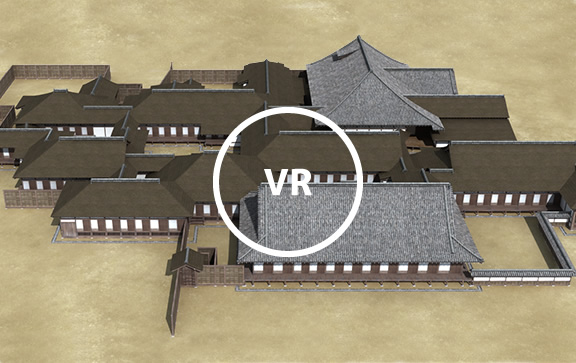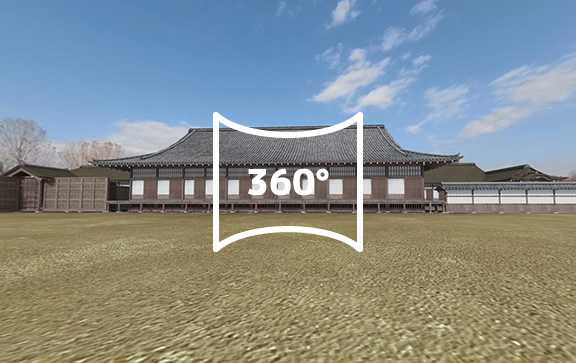Artifacts and excavation status
Information on artifacts and excavation status
Reconstruction work of Honmaru Ichimonji-mon gate stone wall
The Honmaru Ichimonji-mon gate stone wall was reclaimed during the Meiji era, and excavation work began in Heisei 8 (1996). Stone wall restoration work began in Heisei 10 (1998), and the photo shows the stone being restored to its original position after it was removed.

Before reconstruction of Honmaru Ichimonji-mon gate Ote-bashi bridge

The Honmaru Ichimonji-mon Ote-bashi bridge was a wooden bridge connecting Ichimonji-mon and Ninomaru, and its piers were excavated from the moat. The bridge girders were supported by three pillars, and according to old drawings, the length of the bridge was "12 ken" (approximately 22 meters).
Completion of reconstruction of Honmaru Ichimonji-mon gate Ote-bashi bridge
In the reconstruction of the Ote-bashi bridge, the pillars were built at the original pier locations, and the upper part was designed as a giboshi railing. The materials used were cedar, pine, and chestnut, based on an evaluation of the wood found during the excavation.









Survey of tile dumping site of Honmaru Nishi-bori west moat earthen mounds

A tile dumping site was found at the site of the Honmaru Nishi-bori west moat. It is assumed that the tiles were discarded in the mid-Edo period, as most of them are black and few are red. The area was reclaimed in the Meiji era, so the tiles were found intact. There used to be a two-story building called Honmaru Tsukimi-yagura or moon viewing tower in this area, and the tiles originated from this building. At the same time, stone materials from the stone wall of the moon viewing tower were also unearthed.
Survey of Honmaru Nishibori west moat Uzumimon-dobashi bridge
The remains of ancient structure called Uzumimon-dobashi bridge were discovered at the center of Honmaru Nishibori west moat. It is approximately 3 meters high and has a maximum width of 12 meters. Uzumimon is one of the gates; it was not a regular gate, but an emergency exit. This dobashi bridge protruded from the Ninomaru side, and is thought to have been constructed as a wooden bridge, not connected to the Honmaru side. It was constructed after the Torii clan of lord of Yamagata Castle in the first half of the 17th century.







